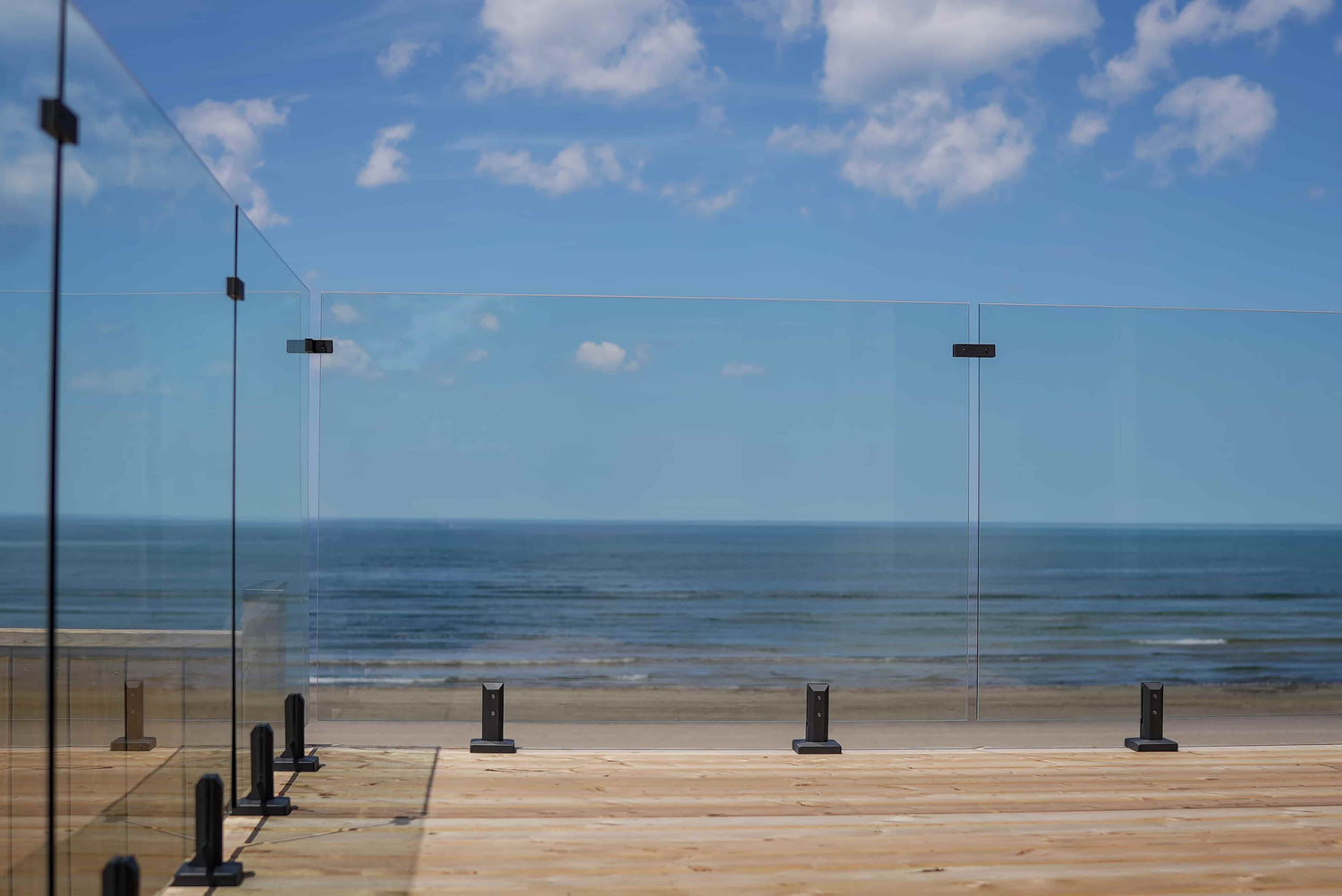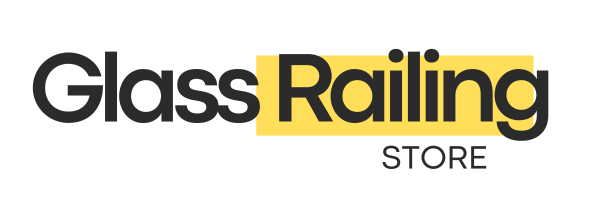North Dakota Glass Railing Code

Glass railings are becoming increasingly popular in North Dakota, from modern homes in Bismarck to lakeside cottages near Devils Lake. Their sleek appearance and unobstructed views bring a modern touch to properties, while offering the essential function of fall protection. But beyond the aesthetics, these systems must comply with strict building codes to ensure occupant safety and pass inspection. Whether you're a contractor designing a luxury patio or a homeowner replacing an old wooden railing, understanding the rules is key to a successful project.
What Codes Are in Effect in North Dakota?
As of January 1, 2023, North Dakota officially enforces the 2021 editions of the International Residential Code (IRC) and International Building Code (IBC). These two model codes serve as the foundation for all construction-related safety standards across the state. While North Dakota adopts these codes at the state level, local jurisdictions—such as Fargo, Grand Forks, and Bismarck—are responsible for enforcement and permitting. According to the North Dakota Department of Commerce – Building Code Division, municipalities have the authority to require additional documents like engineering plans, especially for more complex installations.
Residential Glass Railings: Key IRC Requirements
For residential applications such as single-family homes, duplexes, and townhouses, glass railing systems must meet the criteria laid out in the 2021 IRC. Guardrails are required on any walking surface that is 30 inches or more above grade. The guard height must be at least 36 inches, providing sufficient barrier protection. On stairways, handrails must be positioned between 34 and 38 inches above the stair nosing to ensure safe hand support during ascent or descent.

Additionally, all openings in the railing system—whether between balusters or glass panels—must be small enough to prevent a 4-inch sphere from passing through. This clause is intended to prevent children or pets from slipping through or becoming entrapped. For the infill portion of the guardrail, either tempered or laminated safety glass is required. Annealed glass, which can shatter dangerously, is strictly prohibited. Explore residential-ready glass railing kits that come pre-approved for IRC compliance.
Commercial and Multifamily Codes: IBC 2021 Requirements
For larger projects involving multifamily residences, commercial buildings, or public structures, the 2021 IBC takes precedence. This code is more detailed than the IRC and includes stringent safety and performance requirements for glass railings. Section 2407 of the IBC specifies several important features:
- Only safety glass (tempered or laminated) is allowed in railings.
- Tempered glass must be used with a continuous top rail to ensure fallback safety.
- Laminated glass may be used without a top rail, but only if it is tested and certified to remain intact upon impact.
- All glass systems must withstand a 200-pound concentrated load applied in any direction at the top edge.
- Each glass panel must be labeled with the manufacturer's name, glass type, and thickness for traceability and inspection.
Any custom or unsupported glass railing system—such as point-fixed or frameless designs—must include stamped structural calculations and product documentation to prove compliance. This is particularly important in commercial applications or luxury builds.
Local Enforcement in Fargo, Bismarck, and Beyond
North Dakota's building code is uniform, but its enforcement varies slightly by jurisdiction. Cities such as Fargo, Bismarck, Grand Forks, and Minot typically adhere to the state code but may impose additional documentation requirements. For example, building departments may request the following:
- Structural calculations signed by a licensed engineer for custom or unsupported installations
- Certification papers for glass panels and mounting brackets
- Load-testing data for top rails and base shoe systems
- Site plans showing setback distances and elevation changes
Some jurisdictions also have zoning overlays or historical review boards that may add layers of scrutiny. It’s wise to contact your local code official early in the planning phase to identify any extra documentation needed for your project.
Code Compliance Overview Table
|
Feature |
Requirement |
Why It Matters |
|
Guard height |
Minimum 36 inches |
Prevents falls from decks and elevated surfaces |
|
Stair handrail height |
34 to 38 inches |
Facilitates safe movement on stairs |
|
Gap size |
No more than 4 inches |
Protects children and pets from falling through |
|
Glass type |
Tempered or laminated safety glass |
Reduces risk of injury during breakage |
|
Load support |
200 lbs. applied at top edge |
Ensures system can withstand impact and weight |
|
Top rail |
Required with tempered glass |
Provides redundancy if glass panel fails |
|
Glass labeling |
Manufacturer, type, and thickness |
Eases inspection and confirms compliance |
|
Engineering documents |
Needed for unsupported systems |
Verifies strength and code conformity |
Common Mistakes to Avoid
Despite clear guidelines, certain mistakes continue to cause problems during inspection. One of the most common is using annealed glass, which is not permitted under any circumstances. Another issue is omitting the top rail on frameless tempered glass systems, which violates structural redundancy requirements unless laminated panels are used and tested for retention.
Designers sometimes forget that even small gaps between posts or panels must meet the 4-inch sphere rule. Likewise, failing to submit proper engineering documentation for unsupported or cantilevered designs often results in permit denials. To avoid such issues, many professionals turn to code-ready glass railing kits that include pretested hardware and clear installation guidance.
Final Thoughts
Glass railings add value, safety, and style to properties throughout North Dakota. Their transparent design helps preserve panoramic views while meeting modern architectural standards. But every installation must be grounded in a solid understanding of the state’s building codes.
The 2021 IRC and IBC lay out essential safety parameters for height, load, and material performance. Compliance isn’t just about passing inspection—it’s about ensuring that the space remains safe and functional for years to come. From design to final inspection, aligning with state and local regulations makes the process smoother, quicker, and more cost-effective. Whether you’re building a backyard deck or fitting out a commercial balcony, start with certified systems and well-documented plans.
FAQs: Glass Railing Regulations in North Dakota
1. Which codes govern glass railings in North Dakota?
The state has adopted the 2021 versions of the IRC and IBC, which apply to residential and commercial installations respectively.
2. Can cities have additional requirements?
Yes. While the codes are set at the state level, cities may require site-specific engineering or additional documents.
3. What types of glass are allowed?
Only tempered or laminated safety glass. Annealed glass does not meet safety standards and is not permitted.
4. Is a top rail always necessary?
For tempered glass, yes. For laminated glass, only if it has been tested to remain intact upon breakage.
5. Do I need engineering plans?
Yes, especially for frameless or custom installations. These documents validate code compliance and safety.
For more information and ready-to-install solutions, visit the Glass Railing Store's code-compliant systems.
Let customers speak for us

Garde-corps en verre près de chez vous
Découvrez comment The Glass Railing Store offre un service exceptionnel à nos clients, grâce à notre équipe dévouée et compétente et à leur amour pour nos produits de garde-corps en verre .







